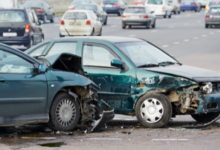Your Daily Defense: Smart Concealed Carry for Every Responsible Citizen

The Basics of Concealed Carry
Concealed carry intersects with personal safety and social responsibility. It requires diligent preparation, ongoing learning, and honest self-assessment about readiness to act under stress. Beginners should start by learning firearm operation, selecting reliable equipment, and wearing suitable attire. The rise of practical, discreet clothing, such as concealed carry shorts for men, demonstrates a growing demand for solutions that strike a balance between safety, mobility, and comfort. Integrating such attire into daily life enables smooth transitions between activities, whether commuting, running errands, or exercising.
However, gear is just one aspect; safety must always take priority. The National Shooting Sports Foundation emphasizes that firearm accidents can be largely prevented by adhering to responsible carrying principles: treating every gun as if it were loaded, pointing firearms in safe directions, maintaining trigger discipline, and being aware of one’s surroundings and what lies beyond the target. These guidelines are necessary not only for beginners but should be practiced daily.
Finding the Right Concealed Carry Holster
Holsters are versatile and often influenced by factors such as body shape, lifestyle, clothing, and the size of the firearm. Inside-the-waistband (IWB) holsters offer maximum concealment, while outside-the-waistband (OWB) models are preferred for colder months or when layering. Ankle holsters, belly bands, and athletic wear also cater to specific situations. A well-designed holster ensures secure firearm retention, protects the trigger guard, and allows for efficient draw. Features like adjustable cant, sweat-resistant linings, and quick-release mechanisms enhance usability and comfort. A good holster should seamlessly integrate into daily life, avoiding discomfort or distraction. Experimentation with placement and fit, consulting with experienced carriers, and seeking guidance from instructors can help refine the setup.
See also: Thomas R Kline Net Worth: Renowned Lawyer’s Wealth
Situational Awareness and Mindset
Carrying a firearm demands an elevated level of attention to the environment. Developing strong situational awareness (observing people, exits, potential blind spots, and cues of abnormal behavior) turns what could be a mundane routine into one of thoughtful vigilance. Condition yellow, a strategy advocated by many safety professionals, is the practice of being generally alert but not actively alarmed. It’s a mental state that enables rapid evaluation and response should circumstances unexpectedly escalate.
Regular Training Matters
Firearm proficiency is crucial for maintaining confidence and muscle memory. Regular range trips and advanced courses in scenario training, low-light shooting, and legal decision-making deepen expertise and provide rehearsal for real-world encounters. Dry-fire practice at home enhances repetition without the noise and expense of live fire, boosting confidence and effectiveness in the field. This practice strengthens safe handling habits in every setting and supports skill growth without the need for live fire. Making this a weekly routine supports skill growth and safety in the field.
Understanding Concealed Carry Laws
Concealed carry regulations are constantly changing, with laws, reciprocity agreements, and prohibited zones changing at the state and local levels. Legal requirements include mandatory training hours, permit renewals, and strict protocols on where firearms can be carried. Staying informed requires consulting official government bulletins, law enforcement announcements, or reputable legal guides. Recent changes in gun laws highlight the varied rules across states, emphasizing the need for continuous learning and flexibility for responsible carriers, especially when crossing state borders for travel or work.
Safe Storage and Daily Habits
Responsible firearm ownership involves securing firearms when not in use, using safes, lockboxes, or discrete storage solutions. This is especially important in homes with children, frequent visitors, or roommates. Modern safes offer rapid biometric or digital access for emergencies. Choose secure, hidden locations within the home for storing carry gear, especially if children are present. Never store a loaded firearm in an unattended vehicle, as vehicles are often targeted for theft. Perform regular maintenance and check functions before and after carrying out tasks, and establish a smooth system through daily routines. It helps minimize accident risks and focuses on preparedness.
Community and Ongoing Responsibility
Building connections with the broader concealed carry community can be an invaluable resource. Gun safety organizations, local shooting clubs, and online forums allow responsible citizens to share tips, discuss new gear or techniques, and uphold high standards for everyone involved. Engaging in these communities not only maintains one’s skills but also encourages accountability and the sharing of updated information regarding safety and legality.
Participating in your community—whether by mentoring newcomers, attending safety seminars, or simply maintaining a respectful and informed presence—fosters a culture of responsible ownership that benefits society as a whole. Every positive action, no matter how small, reinforces a commitment to safety, education, and integrity.





